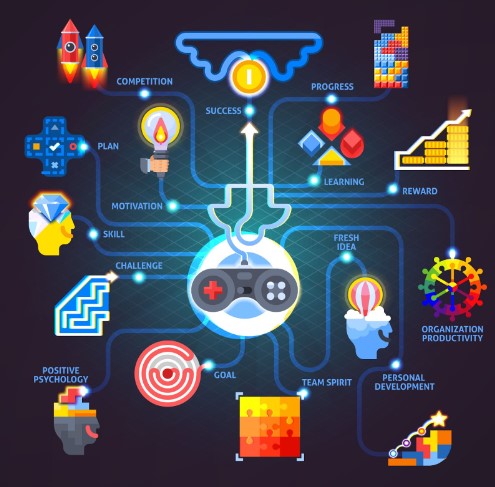Why Did The Gamification Strategy Become A Trend?
Published on: March 25, 2024
Reading time:
3 minutes

AI generated image
Gamification is a strategy that incorporates elements of games into contexts such as education, training, marketing, and others. The goal of this tool is to increase engagement, motivation, and learning among participants, creating more enjoyable and challenging experiences. In this article, we will explain a little about what gamification is.
The strategy of games to engage
Or gamification, in English, is the application of game strategies in everyday activities, aims to increase participant engagement. It is based on "game thinking," a concept that encompasses the integration of gamification and other knowledge from corporate and educational environments. Each game has an objective, and players/employees need to overcome obstacles and fulfill missions.
In gamification, it's possible to stimulate learning, motivate behaviors, and create a sense of reward. Competition lies at the heart of the process, which is why it's common to see companies that adopt this tool recognizing employees who perform the best.
The Power of Gamification
The elements of gamification are those that make up a game and can be adapted to different contexts. Researchers and authors of the book "The Power of Gamification and Game Thinking in Business, Education, Government, and Social Impact," Kevin Werbach, and Dan Hunter, classify gamification elements into three categories: dynamics, mechanics, and components.
In the dynamic category, the basic characteristics of the game that guide its functioning system include:
- Emotions: which emotional state should be triggered to maintain players' interest.
- Narrative: what story is behind the game and how it relates to the objective.
- Progression: how the game evolves over time and what the levels of difficulty are.
- Relationship: how players interact with each other and with the game.
In mechanics, the rules and procedures that define the game's operation, such as:
- Challenges: what tasks players must perform to advance in the game.
- Chance: what role chance and uncertainty play in the game.
- Competition: how players compare to each other and what the criteria for victory are.
- Cooperation: how players can collaborate with each other to achieve a common goal.
- Feedback: how information about performance in the game is received.
- Rewards: what incentives players receive for completing challenges or achieving goals.
The components are the visual or auditory elements that make up the game interface. They include:
- Avatars: how players represent themselves in the game.
- Badges: symbols that indicate players' achievements.
- Levels: what stages players must complete to progress in the game.
- Points: units of measure that show players' performance.
- Rankings: lists that show players' positions in relation to others.
In the next post, we will conclude this current and promising topic. Follow our social media channels to learn more.
#Gamification #Games #Fun Learning #Engagement #Challenges #CorporateGames #EducationalInnovation #UserExperience #Motivation #InteractiveEducation
Photo by macrovector oficial para freepik
Share post:
Return to blog


